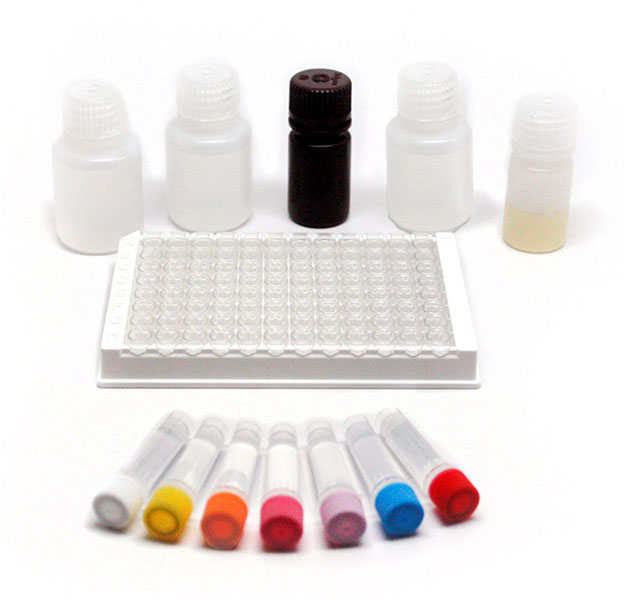
Histamine ELISA kit
This Histamine ELISA kit is tailored for the quantitative measurement of histamine in urine and plasma samples. Intended for in vitro diagnostics, the immunoassay can be combined with the add-on kit BA-E-1100, to quantify histamine release in whole blood.
Histamine is an organic nitrogenous compound which naturally occurs in the human body, where it acts as neurotransmitter and is involved in immune responses and the regulation of physiological functions.
Histamine is naturally occurring in food, with high concentrations associated with spoiled and fermented foods. Exposure to high levels of histamine through the ingestion of food can cause symptoms similar to an allergic response.
Our Histamine Assay Kit detects total histamine from food samples using a colorimetric probe. Reduction of the probe yields color development proportional to the histamine levels in the sample. Absorbance at 450nm is read after a one hour incubation, and histamine levels are calculated based on a histamine standard curve.
Contents of Kit
1. Microtiter plate
2. Calibrator 0 (Negative Control)
3. Calibrators (3)
4. Histamine-Alkaline Phosphatase (AP) Enzyme Conjugate
5. Extract Solution/Sample Diluent (10x)
6. Wash Solution 10X concentrate,
7. Substrate/Color Solution (pNPP )
8. Stop Solution (3 N NaOH)
Fast and highly sensitive histamine analysis
The Romer Labs test kit portfolio covers 2 highly sensitive ELISA methods for the quantitative analysis of histamine in different food matrices.
Histamine test kits are accurate and reliable enzyme-linked immunosorbent assays (ELISA) in a quantitative format. These test kits have been validated for the analysis of histamine in fresh fish, fish meal, cheese, sausage, milk, wine and champagne.
Histamine Rapid test kits are specifically developed for the detection of histamine in fresh, canned and salted fish, as well as in fish meal and fish in oil. The workflow of these test kit has been optimized for fish samples and allows for a much faster assay procedure.
Histamine test kits are competitive ELISAs in a ready-to-use format to reduce handling errors and come with a set of 8 standards, a histamine coated plate, an acylation reagent, an acylation buffer, a wash buffer, a histamine antiserum conjugate, a substrate and a stop solution.
Symptoms of Histamine
Histamine can affect your skin, gut, brain, lungs, and your entire cardiovascular system as it flows through your bloodstream. This can make recognizing and diagnosing a histamine intolerance difficult. Histamine intolerance can display a vast range of symptoms, including:
* . Headaches/migraines
* . Abdominal cramps
* . Hives
* . Abnormal menstrual cycle
* . Hypertension
* . Anxiety
* . Nasal congestion
* . Sneezing
* . Difficulty breathing
* . Arrhythmia, or accelerated heart rate
* . Nausea, vomiting
* . Difficulty falling asleep
* . Tissue swelling
* . Difficulty regulating body temperature
* . Fatigue
* . Vertigo or dizziness
* . Flushing
Common causes of high histamine levels are:
*. Allergies (IgE reactions)
*. Leaky gut
*. GI bleeding
*. SIBO, or Small intestinal bacterial overgrowth
*. Histamine-rich foods
*. Diamine oxidase (DAO) deficiency
There are also a variety of foods that naturally contain histamine, cause histamine release, or block the enzyme (diamine oxidase or DAO) that breaks down histamine, in addition to the histamine produced inside your body.
Histamine is primarily broken down by diamine oxidase (DAO) in the digestive tract.
Diamine oxidase (DAO) blocking foods include:
* Alcohol
* Green tea
* Black tea
* Mate tea
* Energy drinks